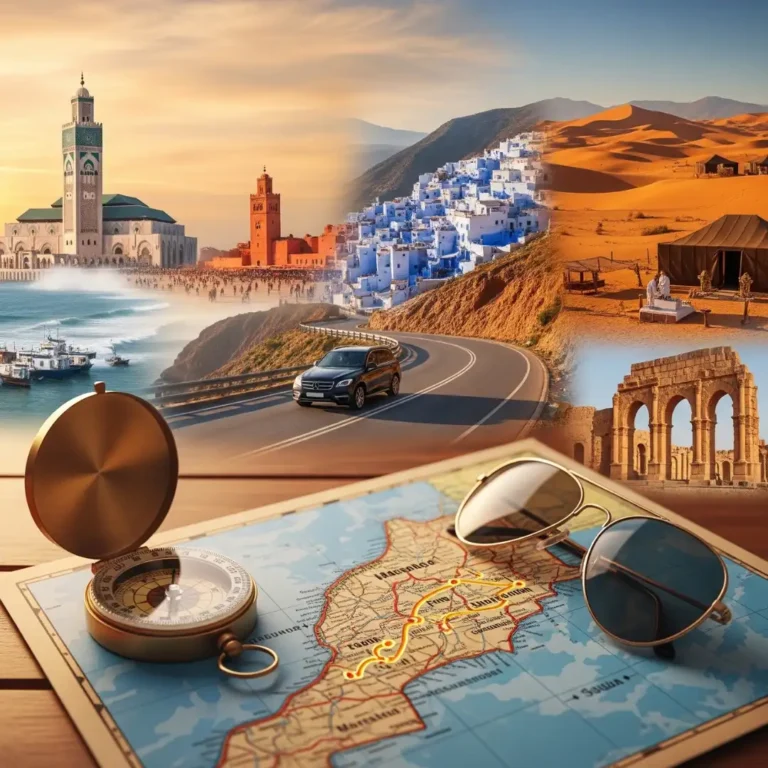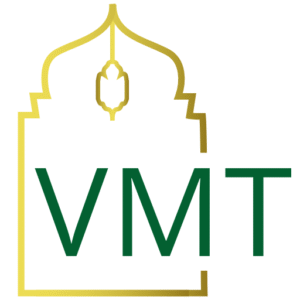Curious? Ask...
Inspire Me...
See Our World
We serve mint tea and hot updates. Subscribe and sip both!
We serve mint tea and hot updates. Subscribe and sip both!
Free things to do in Fez | Chouara Tanneries takes you deep into the city’s oldest craft. Watch leather dyed by hand in open-air vats of natural colour. This isn’t a performance—it’s raw tradition in motion, surrounded by medina rooftops, scent, and centuries-old rhythm.
The moment you turn off Talaa Kebira toward the smell of earth and leather, the world begins to change. The air thickens with history. You follow the winding streets until you reach a simple doorway, climb a few narrow stairs, and step onto a terrace overlooking an ancient spectacle: the Chouara Tanneries, one of the oldest leather-dyeing sites in the world. Sunlight dances over circular vats filled with vibrant reds, yellows, and blues, while workers in worn boots move with a rhythm passed down through generations.
Of all the free things to do in Fez | Chouara Tanneries stands out not just for its age, but for its raw, living energy. This isn’t a place you simply see—it’s one you feel in every sense. The scent, the motion, the stories in every splash of dye… they linger long after you’ve left.
Unlike a museum, nothing here is curated. The tanneries don’t hide behind barriers or polish themselves for visitors. You’re watching real labour, in real time, the way it’s been done since the 11th century. The surrounding shops may offer a balcony view in exchange for a quick look at their goods, but the view itself remains free. The tannery doesn’t need a ticket — just your presence and willingness to take it all in.
If you’re browsing free things to do in Fez | Chouara Tanneries is the moment you realise the city isn’t made only of monuments — it’s made of craft.
Chouara isn’t just a photo stop. It’s a living heritage. Leather goods made here — slippers, belts, bags — are shipped worldwide, but it all starts in these vats: cowhide, pigeon droppings, water, and saffron. What may seem primitive is actually sustainable, local, and deeply rooted in Islamic craftsmanship traditions.
Several artisans working here are descendants of tanners going back centuries. And unlike mechanised leather factories, these men still work by hand — stirring dyes, softening hides, and trusting their own eye for colour. It’s a place that holds the heartbeat of Fez. As recently highlighted in Morocco World News, Chouara continues to be the symbolic birthplace of Morocco’s leather industry and craftsmanship.
Your first instinct might be to cover your nose — and that’s okay. The mix of lime, ammonia, and natural dye is strong, but you’ll adjust quickly. Look past the smell, and you’ll see something hypnotic: rows of colour, almost like a painter’s palette set into the ground.
Notice the contrast: brilliant colours in the dye vats vs. the rough tones of mud-brick walls. Workers walking barefoot beside delicate tools. Leather hung like drying clothes, flapping in the breeze. This is one of the most unique free things to do in Fez | Chouara Tanneries, and also one of the most authentic.
If you’re already navigating the medina for free things to do in Fez | Chouara Tanneries, add these gems to your route:
Al Attarine Madrasa- Step into this intimate architectural gem, where zellige tilework and cedar ceilings speak in sacred geometry.
Qarawiyyin Courtyard- Wander through the peaceful courtyard of the world’s oldest university — a quiet reflection of Islamic learning.
Nejjarine Museum Courtyard- Take a breath under carved balconies and restored woodwork in this serene stop, once a funduq for travelling artisans.
Together, they form a living loop of craftsmanship, devotion, and historical artistry.
Locals know the best time to visit is in the morning when dye colours are strongest and light cuts through the air just right. Many tanneries have a favoured balcony — one with a clearer angle or fewer crowds — and if you look lost, someone might guide you. Some guardians of the leather shops will hand you a sprig of mint to help with the smell, a kind gesture that’s now part of the experience. And if you stand there long enough, you’ll notice how everyone slows down. Visitors speak more softly. The view demands it. Also, as noted in Ancient Origins, Chouara’s methods have remained remarkably unchanged for centuries, preserving their authentic role in Moroccan culture.
If you’re lucky, a worker might invite you down to the lower vats — this is rare, and not guaranteed, but possible. Keep an eye out for small animal skins hung separately — these are often goat or camel, processed with special techniques.
Also, if you continue behind the tannery walls, you’ll find a quiet alley where dyed hides are stretched to dry on old wooden racks. These are not part of the usual tour and make for stunning, respectful photography.
Many travellers only view the tanneries from above, but the deeper story lies in the textures, rituals, and tools below. Morocco Artisans beautifully outlines the full leather-making journey — from hide preparation to finishing touches — offering insight beyond the surface.
Bring a scarf or mask if you’re sensitive to strong smells
Morning visits (09:00–11:00) offer the best colour and light
Ask politely before taking close-up photos of workers
Wear closed shoes; splashes are possible in some corners
Skip if raining — the stairs and paths can be slippery
Don’t feel pressured to buy anything; it’s okay to say thank you and leave

Discover the charm of these free spots, then let us take you further, exploring culture, history, and the heart of Morocco.

Visit Morocco Tours
Escape Alchemist
VMT
Tell us your travel drama, we’ve got solutions!